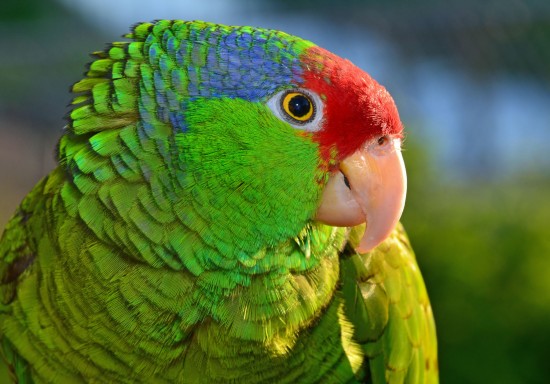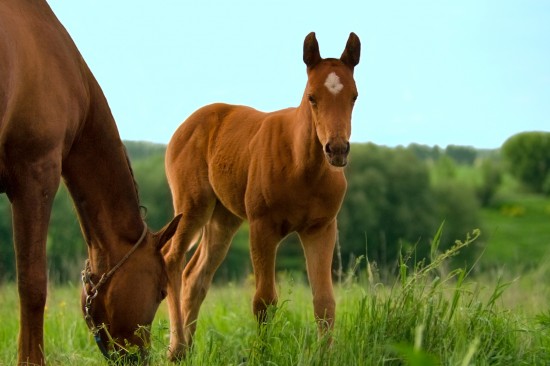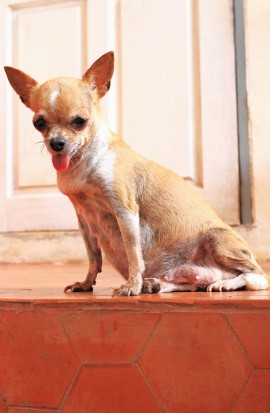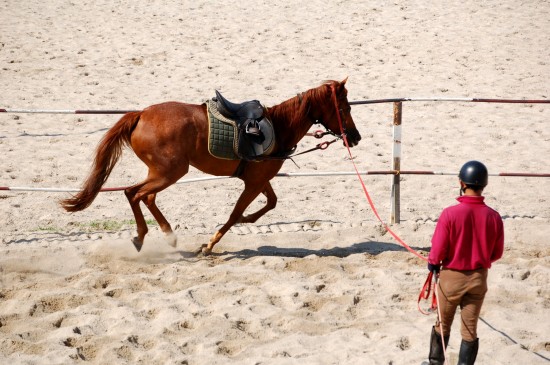

The Red crowned Amazon (Amazona viridigenalis) is also known as the Green cheeked Amazon and the Mexican Red-headed Parrot. It is an endangered species that originates from north-east Mexico but only around 1000-2000 birds are left in the wild. The main threat to them is the illegal bird trade as well as destruction to their native habitats.
In the wild, they live in the lowlands of north-east Mexico as well as having been introduced to Puerto Rico and the US with feral populations in California, Florida and Texas. They inhabit the forests and wooded areas of the lowlands as well as the neighbouring foothills.
These amazons are typically around 13 inches in length and can live up to 60 years in captivity. Their feathers are mostly green with a bright red area across the beak and forehead as well as brilliant blue feathers behind the eye. The underside of the tail feathers are lime green or yellow and they have horn coloured beaks and legs.
Compared with its amazon cousins, the Red crowned is described as one of the amenable of the species. It is not as independent or feisty as many of the amazon species though it will still assert itself when it feels the need. This can easily be noticed as the pupils will construct and light up, referred to as ‘blazing eye’, the head will come down and the tail feathers will fan out. This is usually a sign to leave the bird alone and is most often in breeding season.
When a Red-crowned Amazon has been hand reared, they make an affectionate and intelligent pet that will need plenty of interaction with their humans, who they will see as their flock, as these birds live in large flocks in the wild. They love to have the top of their head and the sides of the face petted and will often lower their heads for this fuss. They will also love to be greeted when you enter a room and come out to join you at the dinner table or sit with you at night while you watch the TV. They are an active part of the family.
They are also very curious and will investigate the world around them with their beak, as with most parrots, so making sure the environment they come out of their cage into is safe for them is important. It is also wise to put away anything you really don’t want chewed, like important papers, as they will enjoy gnawing when out of their cage.
Amazons are prone to weight gain so as well as balancing their diet, exercise out of the cage is important for this reason as well as for emotional ones. This allows them to burn off calories and also strengthen their muscles as well as providing them with the mental stimulation they need.
The minimum recommended size for a cage is 2 x 3feet and at least 5 feet high, often with a playpen top. A variety of different sizes of perches is also important, as this is good for their feet and legs. Perches that help them file down their nails are also a great addition to the cage. They also need access to water for bathing as well as for drinking or they can be sprayed if they don’t bathe themselves.
It is also recommended that the cage kept in a quieter area of the house for sleeping so that the bird can get necessary rest away from the bustle of the home. Avoiding drafts is also important though they can tolerant to a range of temperatures.
All parrots are susceptible to certain illness and conditions and the Red crowned Amazon is no different. It is important to know your bird well so that you can quickly spot any potential signs of illness that include listlessness, sagging body, dropping wings and ruffled plumage. If your bird doesn’t eat as normal, has trouble breathing or has swellings anywhere, seek a vet immediately.
The most common illnesses to affect the Amazon include psittacosis (parrot fever), bacterial or fungal infections, feather picking (usually a behavioural problem due to boredom or poor diet for example) and allergies.
Their diet in the wild consists of fruits, berries, seeds and nuts as well as the blossoms and buds on the trees. They can be messy eaters, who take a bite from each piece of fruit then throwing it to the floor.
As mentioned, Amazons can easily gain weight so managing their diet for them is important. A balance of pellets and seeds is important with fruit and vegetables to avoid obesity and for general health too. They can also suffer from vitamin A deficiencies as well as low calcium so make sure they get plenty of food that provide natural sources of this. Grit or cuttlefish is important and liquid calcium can always be added to drinking water as well.
In addition to the traditional fruit and vegetables, sweet potatoes are a great source of vitamin A while a touch of honey or peanut butter can be offered. Cooked pasta is also worth trying them with once cooled although if out of their cage at meal times, will be tempted to try anything you are eating!
These birds have been bred successfully since the 1970s and reach sexual maturity around five years old. They cannot be sexed visually so a DNA test is the best way to do this.
Their preferred nest box is around 31-39 inches high with an inner dimension of 12-14 inches and an opened of 4-5inches. Some soft bedding material can be added to the bottom of the box and on this, the hen will lay 2-4 eggs. Incubation takes place for 29 days and the chicks will fledge at around 9 weeks old.
While not a bird for a first-time parrot owner, the Red crowned Amazon is a wonderfully intelligent and interactive bird that will be an active part of the family and return all of your affection and attention.
 Understanding Equine Grass Sickness
Understanding Equ
Understanding Equine Grass Sickness
Understanding Equ
 What To Feed Your Bearded Dragon
What To Feed Your
What To Feed Your Bearded Dragon
What To Feed Your
 What Changes Will You Notice In Your Dog When She Is Pregnant?
What Changes Will
What Changes Will You Notice In Your Dog When She Is Pregnant?
What Changes Will
 Horses - Show Time And How To Get Fit
Horses - Show Tim
Horses - Show Time And How To Get Fit
Horses - Show Tim
 All Information About Dog Trainers
All Information About Dog Trainers
There are a
All Information About Dog Trainers
All Information About Dog Trainers
There are a
Copyright © 2005-2016 Pet Information All Rights Reserved
Contact us: www162date@outlook.com